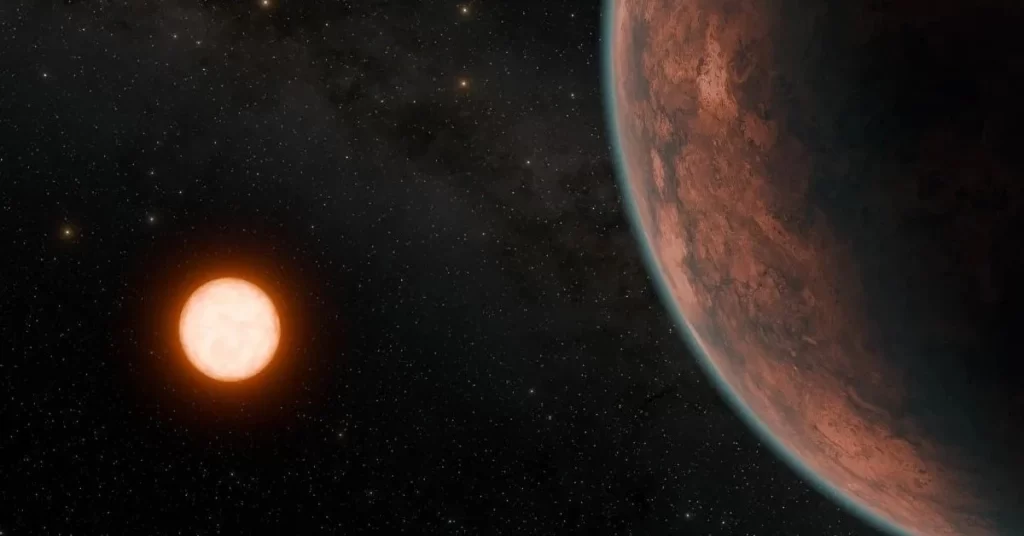NASA Discovers Potentially Habitable ‘Super Earth’ Just 40 Light Years Away
NASA recently made an exciting announcement that has captured the imagination of scientists and space enthusiasts alike: the discovery of a potentially habitable exoplanet located just 40 light years from Earth. This exoplanet, named Gliese 12 b, orbits its star every 12.8 days and may offer conditions suitable for life.
The Discovery of Gliese 12 b
Gliese 12 b is classified as a “super Earth exoplanet,” which means it is a type of planet that is similar in size to Earth, or perhaps slightly smaller. According to a news release from NASA, this exoplanet has garnered significant attention due to its potential habitability. Exoplanets are planets that exist outside our solar system, and their discovery helps astronomers learn more about the universe’s diverse planetary systems.
In a statement, Masayuki Kuzuhara, a project assistant professor at the Astrobiology Center in Tokyo, emphasized the importance of this discovery: “We’ve found the nearest, transiting, temperate, Earth-size world located to date. Although we don’t yet know whether it possesses an atmosphere, we’ve been thinking of it as an exo-Venus, with similar size and energy received from its star as our planetary neighbor in the solar system.”
Characteristics of Gliese 12 and Its Planet
Gliese 12, the star that Gliese 12 b orbits, is a cool red dwarf star. These stars are smaller and cooler than our sun, which has significant implications for the planets that orbit them. According to NASA, Gliese 12 is only about 27% of the size of the sun and has approximately 60% of the sun’s surface temperature. This cooler temperature means that even planets that are relatively close to the star might have conditions that could support life.
One of the key factors in determining the habitability of Gliese 12 b is its distance from its star. The planet orbits Gliese 12 at just 7% of the distance between Earth and the sun. Despite this close proximity, the planet only receives 1.6 times more energy from its star than Earth does from the sun. This balance is crucial, as it suggests that Gliese 12 b might have a surface temperature that is conducive to maintaining liquid water, assuming it has an atmosphere.
Potential Habitability
While it is still unknown whether Gliese 12 b has an atmosphere, NASA astronomers have made some educated guesses about its conditions. If the planet lacks an atmosphere, its surface temperature is estimated to be around 107 degrees Fahrenheit. This temperature is within the range where liquid water could exist, which is a fundamental requirement for life as we know it.
The potential habitability of Gliese 12 b makes it a prime target for further study. Shishir Dholakia, a doctoral student at the Centre for Astrophysics at the University of Southern Queensland in Australia, highlighted the significance of this discovery: “Gliese 12 b represents one of the best targets to study whether Earth-size planets orbiting cool stars can retain their atmospheres, a crucial step to advance our understanding of habitability on planets across our galaxy.”
Future Research and Implications
NASA researchers are eager to study Gliese 12 b and other similar planets to unlock the mysteries of our solar system’s evolution. By examining these exoplanets, scientists hope to gain insights into the conditions that allow planets to maintain atmospheres and support life. This research could be pivotal in our understanding of how life might develop on other worlds.
Michael McElwain, a research astrophysicist at NASA’s Goddard Space Flight Center in Greenbelt , Maryland, explained the importance of this type of study: “We know of only a handful of temperate planets similar to Earth that are both close enough to us and meet other criteria needed for this kind of study, called transmission spectroscopy, using current facilities. To better understand the diversity of atmospheres and evolutionary outcomes for these planets, we need more examples like Gliese 12 b.”
Understanding Exoplanets and Their Atmospheres
Transmission spectroscopy is a technique that allows scientists to study the atmospheres of exoplanets by observing the way light from their star passes through the planet’s atmosphere. This method can reveal the composition of the atmosphere, including the presence of gases such as oxygen, methane, and carbon dioxide, which are considered potential indicators of life.
The discovery of Gliese 12 b adds to a growing list of exoplanets that are being studied for their potential habitability. Each new discovery provides valuable data that helps scientists refine their models of how planets form and evolve. This information is crucial not only for understanding exoplanets but also for learning more about the history and future of our own solar system.
The Broader Context of Exoplanet Research
Exoplanet research has come a long way since the first discovery of a planet outside our solar system in the 1990s. Today, thousands of exoplanets have been identified, with many more awaiting confirmation. These discoveries have transformed our understanding of the universe, revealing that planetary systems are common and diverse.
One of the most exciting aspects of exoplanet research is the possibility of finding life beyond Earth. While the discovery of life on another planet remains elusive, each new potentially habitable planet brings us one step closer to answering the age-old question: Are we alone in the universe?
The Role of Advanced Technologies
Advancements in technology have been instrumental in the search for exoplanets. The Kepler Space Telescope, launched in 2009, was a game-changer in this field, discovering thousands of exoplanets by monitoring the brightness of stars for the telltale dimming that occurs when a planet transits, or passes in front of, its star.
Following Kepler, the Transiting Exoplanet Survey Satellite (TESS) launched in 2018, has continued this work, focusing on finding smaller, Earth-sized planets around nearby stars. TESS has already made numerous significant discoveries, contributing to our growing catalog of exoplanets.
The Future of Exoplanet Exploration
Looking ahead, the James Webb Space Telescope (JWST), set to launch in the near future, promises to revolutionize our understanding of exoplanets. With its powerful infrared capabilities, JWST will be able to probe the atmospheres of exoplanets in unprecedented detail, potentially identifying the chemical signatures of life.
In addition to space telescopes, ground-based observatories equipped with cutting-edge technology are playing a crucial role in exoplanet research. Instruments such as the Extremely Large Telescope (ELT) and the Giant Magellan Telescope (GMT) are expected to provide high-resolution images and spectra of exoplanets, offering new insights into their properties.
International Collaboration
The search for exoplanets is a global endeavor, with scientists and institutions from around the world collaborating to advance our understanding of these distant worlds. International partnerships, such as the collaboration between NASA and the European Space Agency (ESA) on missions like the JWST, are essential for pooling resources and expertise.
In addition to collaborative missions, data sharing among the global scientific community enables researchers to cross-verify findings and build on each other’s work. This collaborative approach accelerates the pace of discovery and helps ensure the accuracy and reliability of exoplanet research.
Public Engagement and Education
The discovery of exoplanets captures the public’s imagination and inspires the next generation of scientists, engineers, and explorers. NASA and other space agencies are committed to engaging the public through outreach programs, educational initiatives, and citizen science projects.
Citizen science projects, such as Planet Hunters, invite the public to help analyze data from telescopes like Kepler and TESS. These projects have led to the discovery of new exoplanets and have demonstrated the valuable contributions that non-professional astronomers can make to scientific research.
Conclusion
The discovery of Gliese 12 b marks an exciting milestone in the search for habitable worlds beyond our solar system. As scientists continue to study this intriguing exoplanet and others like it, we move closer to understanding the potential for life elsewhere in the universe.
Each new discovery adds a piece to the puzzle, helping us learn more about the conditions that support habitability and the diversity of planetary systems. With advanced technologies and international collaboration, the future of exoplanet research holds great promise. The quest to find another Earth-like planet continues, driven by our innate curiosity and the desire to explore the unknown.



